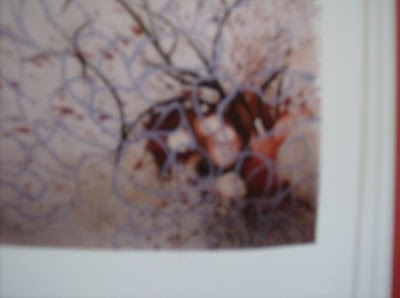 Marcy Avenue Station
Marcy Avenue Station
I arrived at Brooklyn late in the evening. The train left me at Marcy Avenue. I went down the stairs and I looked around. The street was animated, lots of folks going in and out small stores, and a very loud music. It was coming from across the street: the second floor of a rather new building, I thought it was a dance school there or something. Actually it was a church, just that, a church at the second floor, in a huge room looking like a school dance, and the music was kind of Latino gospel. A McDonald was at the first floor.
I took a left on the 8th Street toward Kent Avenue and I found myself suddenly in an ultra-Orthodox Jewish neighborhood. It was Friday night and the men were hurrying up, dressed very traditionally: you would have said time went back and you were some place in medieval Prague or Vienna. After a couple of blocks the Jewish got mixed with a bit of Latino, as some new immigrants had recently moved in the neighborhood. I started to realize that Brooklyn was a place to offer you constantly the unexpected.
Next morning I took the way back and I passed Marcy Avenue, toward Grand Street. I had to meet there with some friends and have breakfast together.
I met with them, only the thing was that each one had totally different ideas what restaurant to choose.
We tried
Santorini Grill; it would have been fine for me, as they had
taramasalata and the divine Greek coffee. One of my friends proposed the
Leon's Burger Hut on Bedford Avenue. It had a great look, with the lion drawn on the window and the colored strips and we could have had there some omelette. Another of us proposed
La Villita Bakery, to have there a cake. I didn't like the idea. So after that we separated, having in mind to meet again for lunch (believe it or not).
Well, Bedford Avenue is a dream: the Axis Mundi for a neighborhood of hipsters, full of picturesque small stores and small bars, and the folks on the street looking great.
And it was there that my sister gave me a totally unexpected gift:
The Wild Party, with illustrations made by
Art Spiegelman. I will come later on this book, it deserves much attention.
(New York, New York)Labels: Brooklyn
 I know you wouldn't believe, but it's true: there is a Dixieland in Georgetown. On the M Street, just in front of Key Bridge. Life is fine there, folks come and go, and look careless: the rhythms of the South. It's Dixie Liquor store, a small room full of wines, and beer, and enjoyment.
I know you wouldn't believe, but it's true: there is a Dixieland in Georgetown. On the M Street, just in front of Key Bridge. Life is fine there, folks come and go, and look careless: the rhythms of the South. It's Dixie Liquor store, a small room full of wines, and beer, and enjoyment.















































